The Ministry of Defence is seeking market information regarding Multi-Mode Radar (MMR) able to monitor space, conduct air surveillance in a traditional ground-based air defence role, including surveillance of small air-breathing targets and tactical ballistic missiles.
The purpose of the request for information, say the Ministry of Defence, is that because they operate many types of MMR, they are “keen to ensure knowledge of the respective MMR market is current”.
“Information is requested which provides insight into the technologies and solutions available in the next 5 years, for an integrated MMR able to provide a space domain awareness (SDA) capability, conduct air surveillance (AS) in a traditional ground-based air defence role, including surveillance of small air-breathing targets and tactical ballistic missiles (TBM). Respondents are invited to provide information and/or views on the subject, including, for example:
a) Potential technologies/solutions, available in the timeframe stated, for the provision of MMR. Their key attributes and applicability to SDA, AS and TBM including levels of technology readiness. Use of any innovative methods such as artificial intelligence or machine learning.
b) Description of SDA capabilities for low Earth orbit coverage.
c) Ability to detect and track cooperative and non-cooperative objects.
d) Approaches to mitigating the effects of wind turbines.
e) Service-life (years) and anticipated maintenance requirements.
f) Product availability, manufacturing lead times and any supply chain constraints. Goods handling, logistical and/or licence/export considerations.
g) Indicative budgetary price ranges for the various MMR solutions.”
The deadline is the 31st of May 2022.


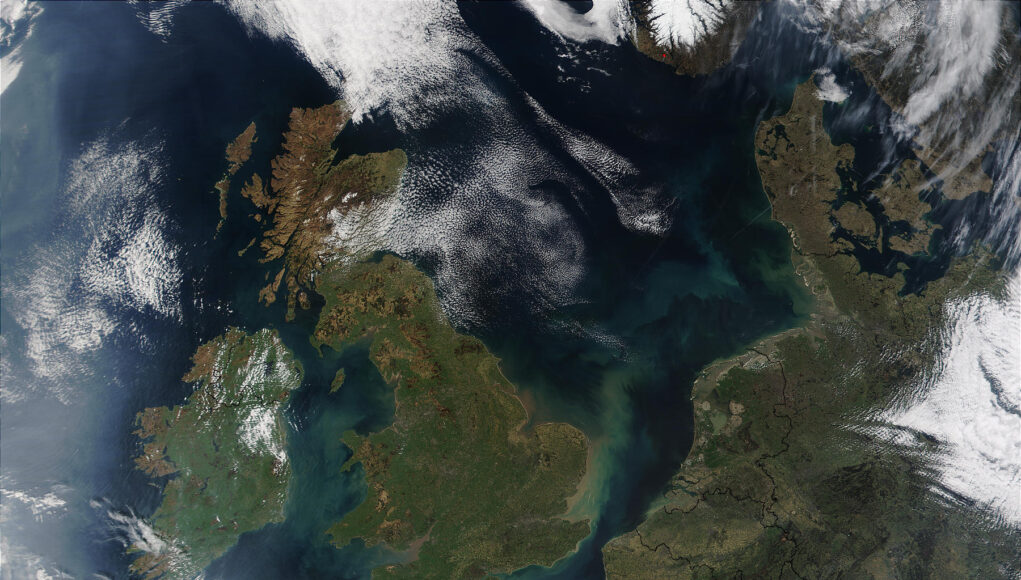
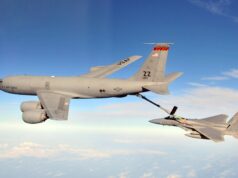
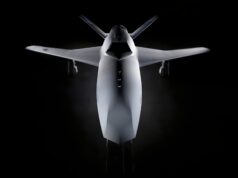

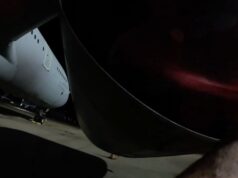
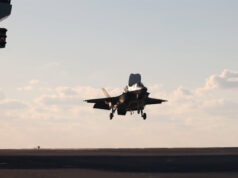
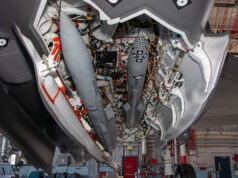

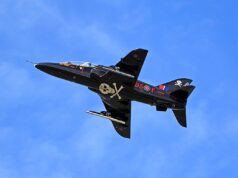



Geez wind turbines are going to be a serious threat I fear in detecting low flying objects coming our way, don’t think of such matters until reading something of this nature.
It has been a consideration for a couple of decades, certainly it was a consideration when I was working in defence procurement. Although it is not my field, I believe there are solutions or at least mitigations for the problem.
However, there would be no point not including the issue in any request for information as you risk getting lots of irrelevant informaion that would still need to be sifted through.
I would also suggest that the wind farms would be targets in need of protection and I would hope that they are designed to be resilient, i.e. the farm would continue to generate power even if a number of the turbines are taken out. This is going to be a key issue given Russia’s aggression and the developing rush for non fosil fuels and energy security.
Our infrastructure has been vulnerable for decades, it would be nice to think that the switch to new energy sources would be taken as an opportunity to change things.
Cheers CR
How the hell are we going to protect the multitude of wind farms we apparently need to ‘go green’… esp. as the majority are going to be offshore ones….we just aren’t.
We could bolt on some Phalanx CIWS for a laugh, lol
A wind farm will be quite a difficult target to destroy. The turbines are large and strongly constructed plus widely didpersed with reasonably good separation. The question is. Who exactly is going to attack them and with what?
Knocking out a large proportion of hjndreds of thousands of turbines would not be a subtle affair. The UKs military would respond as would NATOs as the turbines are located in uk soverign territory.
I think conversely wind farms are actually quite a good form of critical power producing infrastructure just because of their size, large dispersion and just how much territory they occupy.
Hundreds or thousands of turbines. Not hundreds of thousands. I know we havent got that many…..yet.
Hi Mr Bell, isn’t the point about wind turbines to do with fact the moving blades effectively mimic a slow moving airborne ‘target’? So the RADAR processor needs to be able to discard these movements whilst at the same time interpret a genuine target on the bearing(s) between RADAR head and wind turbine i.e. drone, helicopter etc.
On the plus side, a Wind Tourbine doesn’t move, so if you have a stationary radar (as you might defending the UK) and you get the wind tourbine contacts on day 1, then on day 1,234 when the Russians attack low on the horizon you’ll already know which contacts are turbines.
Threat, target and opportunity too. They will form a increasing amount of our energy infrastructure, which will need protection. Maybe radars plonked on the top of the turbines might become a thing.
Trails have taken place in the North Sea using radars fitted to wind farm substations. Danish airforce F16s flew through the sites at various altitudes and speeds to test the tracking.
You can always put a small radar or picket craft on the other side of the field.
I bet those who are looking at this will have lots of information on what is happening in Ukraine ‘on their desks’ as well. Russia’s stand off bombardment weapons do appear to work well enough to do a lot of damage to a country and disrupt ‘normal’ life – which has a huge impact on any war effort.
If Boris is right and this war drags on for months then we will see an how nation’s evolve their strategies and tactics as they use up their advanced weapons. We are already seeing this with Russia reportedly switching to 1950’s vintage bombs and using strategic bombers to deliver them…
Good luck Ukraine.
CR
You can’t jam or hack a dumb bomb?
But you need 100x as many as the accuracy is so, so poor.
I thought the strategic bombers were being used to bomb the Azovstal tunnel complex.
Makes sense not to use smart bombs to shift dirt if they’re irreplaceable.
Yes thinking has been that two modern industrialised nations won’t fight long protracted wars because they’ll expand their hi-tech weaponry faster than it can be manufactured. I heard an estimate early in the war that both Ukraine and Russia were expending between 5% and 10% of their munitions every week. At some point these will run out, especially for Russia which is being denied high-tech electronic components due to sanctions. Russia will also not want, for example, to use its entire stock of Iskanders on Ukraine, in case it has to engage against NATO at some point.
IF the West can supply all of the Ukrainians weapons requests for the full duration of the war, then they can win.
Attack of a windfarm seems pretty expensive compared to taking out some base load gas fired stations or god forbid nuclear which are much bigger and easier to hit. In reality
grid transformer stations are just as critical if not more so and would cause more disruption than a single station going offline. Wind farms are low risk when you think about it as they are distributed and one field going offline won’t take the grid with it. We need far more wind turbines to be energy independent from the middle East and spread the risk so when things like Ukraine happen the blow is softened. Offshore would seem to be more of a risk for a hiding a low level attack (Northfolk coast) so i would hope that’s be thought about.
💯
If they are looking for a do it all radar. So it provides both 3D volume search as well as target tracking. Then they really need to look at something operating in the X-band (8 to 12 Ghz). The reason for this is that having a wavelength of 3.75 to 2.5cm, means it has better target resolution as well as possible identification. At these smaller frequencies material differences, panel gaps, uncovered bolt/screw heads and rivets all help with the signal return. Using synthetic aperture techniques the radar can also build up a pretty decent image of the target. But crucially these frequencies will help it differentiate between debris, decoys and the real target.
The problem though is the effective detection range versus the effective radiated power. To have a similar range to a medium range radar such as the Sampson operating in the S-band. You need to add some serious oomph. This is because X-band is significantly more affected by atmospheric attenuation, which restricts the detection range.
However, it is doable to have a very long range X-band radar that can detect objects in low to medium Earth orbit or even higher. For example, the sea based X-band radar (SBX-1). Which is a moveable platform that houses a single active electronically scanned array (AESA) that has a diameter of 37m, contains space for 45,000 transmitter-receiver modules (TRMs), which makes an antenna array area of 384m2. By comparison the F35’s AN/APG-81 has 1676 TRMs which is currently the pinnacle of aircraft based radar. This means the SBX-1 AESA radar has a published range of 2900 miles, even though it only has 22,000 TRMs fitted. This radar is likely transmitting close to 400kW at peak.
The Terminal High Altitude Area Defence (THAAD) anti-ballistic missile system which is designed to counter short, medium and intermediate range ballistic missiles. Uses the Raytheon AN/TYP-2 AESA radar. This uses similar technology to that used in the SBX-1 radar, but its TRMs have an antenna array area of 9.2m2. Raytheon have said it has a 1000 mile detection range, although some have quoted 1000km and even 2900 miles, but its probably closer to 1000km. It has been used by the UAE to successfully intercept a Houthi ballistic missile aimed at the country.
A development of the AN/TPY is being used for the US National Missile Defence radar called the X-band radar (XBR). The array has an area of 123m2 with a space for 81,000 third generation TRMs. However it is only populated with 16,200 due to the high cost, but is till likely to pumping out around 400kW at peak. This still gives the radar a detection range of 4000km against a non-stealthy re-entry vehicle, which they say is reduced to around 2000km for stealthy re-entry vehicles. This means the radar should be able to track intercontinental ballistic missiles (ICBMs) through their transit phase, to the release point and when the re-entry vehicle re-enters the Earth’s atmosphere, along with tracking their descent.
Issues with wind turbine have been understood for a long time. They can affect radars that use longer wavelengths more than shorter wavelength ones in general. However, that depends on the type of radar, i.e. mono, pulse doppler PESA, AESA etc) as well as the performance of its signal processing. For older radars that operate in the UHF or lower bands, turbine blades can effectively block a radar transmission. This is in part due to the wavelength matching the blade length, but also due to longer transmission period that these radars require. The slowly spinning turbine can set up a return signal that the receiver doesn’t recognise.
If a radar uses higher frequencies with operate with a high pulse repetition frequency (PRF). The transmission can pass through the spinning blades. However, some can be returned as a ghosted signal. Which with cheaper signal processing is either not filtered out or is shown as an intermittent object. With the advent of AESA radars in particular, that operate at higher frequencies. The very tight beam forming along with the very fast scan rate also helps the transmission pass through the blades.
One of the issues is that the wind turbine does not spin at a constant speed, which would have made it easier to filter out. However, targets flying above 300 mph due to their different Doppler signature are easier to see. Aircraft such as slow moving UAVs are difficult, due to their speed being similar to the turbines generated Doppler signal. With advanced codified waveform techniques and AESA, radars can pretty much see through wind turbines and with signal processing mitigate the wind turbine’s interference. How they cope with very large wind turbine fields will be dependent on the performance of the signal processing.
This is an interesting read on wind turbines and stealth.
https://www.renewableenergyworld.com/baseload/stealth-blades-get-turbines-under-the-radar/#gref
I like the idea of a radar on top of a pylon, not sure how practical that is, however the Sharpeye nav radars are very small and light and have a good discrimination in bad weather AND have a very small power output. It could look after low level approaches underneath the pylon field. There’s a lot of “gear” at the top of a mast though, how this would interfere with a radar perched on top would be anybodies guess?
AA
Oh dear, the person who put together that article needs to do some homework!
The simplest and cheapest method to see through and beyond a wind turbine farm, is to mount a radar on the other side of the farm. For the UK sea based farms, retired oil rigs would be the perfect platform for a search radar. It could be operated remotely and self powered through tidal, sun or from the wind farm.
The next stage would be networking radars together to build a standard picture model. By building the model you can then tell if something new is being seen.
Following that is enhanced radar signal processing in association with AESA’s narrow beam and very fast scan rates. The better filtering comes at a substantial cost though. With higher frequency radars you can tune the filters to recognize the rotational direction of the blades. As these generate a unique signature. A whole farm will spin in the same direction for example, even though they are spinning at different speeds.
The majority of wind turbine blades are a composite construction using a blend of fibre glass and carbon fibre. Fibre glass on the whole is transparent to radar. Carbon fibre is frequency dependent. The blades have an embedded leading edge erosion strip, which can be aluminum, stainless steel or titanium. The strips are there to protect the composite structure from small debris carried in winds. It’s these metal strips that cause the majority of issues with radar.
I know zilch about windmill construction! It all seemed reasonable to me…
Perhaps another issue apart from the defence aspect is commercial radar interference. Ships nav systems, low flying aircraft or helicopters, that sort of thing, in which case the drive for a lower radar reflectivity makes sense.
I have stood under the shore mounted turbine in Lowestoft (Gulliver they call it) and my my, the speed those blade tips whizz by and the noise they create!
AA
Why go for the windfarm when the critical path will be the transformers/substations where the supply chain is very limited and lead times are years. Its all about biggest effect for minimal effort and how difficult it is to replace/repair.
Lots of work was done on modelling locations of windfarms v radar installations when they were being proposed in the 90’s, say no more!
First hint that we are going to get some sort of ABM / long range air defence system for the UK.